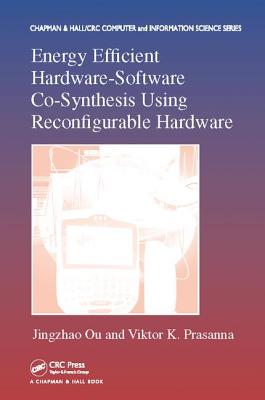-
出版商:
CreateSpace Independ
-
出版日期:
2014-04-09
-
售價:
$1,020
-
貴賓價:
9.5 折
$969
-
語言:
英文
-
頁數:
40
-
裝訂:
Paperback
-
ISBN:
149758079X
-
ISBN-13:
9781497580794
-
相關分類:
資訊安全
商品描述
The national and economic security of the United States depends on the reliable functioning of critical infrastructure. To strengthen the resilience of this infrastructure, President Obama issued Executive Order 13636 (EO), “Improving Critical Infrastructure Cybersecurity,” on February 12, 2013.1 This Executive Order calls for the development of a voluntary Cybersecurity Framework (“Framework”) that provides a “prioritized, flexible, repeatable, performance-based, and cost-effective approach” to manage cybersecurity risk for those processes, information, and systems directly involved in the delivery of critical infrastructure services. The Framework, developed in collaboration with industry, provides guidance to an organization on managing cybersecurity risk. Critical infrastructure is defined in the EO as “systems and assets, whether physical or virtual, so vital to the United States that the incapacity or destruction of such systems and assets would have a debilitating impact on security, national economic security, national public health or safety, or any combination of those matters.” Due to the increasing pressures from external and internal threats, organizations responsible for critical infrastructure need to have a consistent and iterative approach to identifying, assessing, and managing cybersecurity risk. This approach is necessary regardless of an organization’s size, threat exposure, or cybersecurity sophistication today. The critical infrastructure community includes public and private owners and operators, and other entities with a role in securing the Nation’s infrastructure. Members of each critical infrastructure sector perform functions that are supported by information technology (IT) and industrial control systems (ICS).2 This reliance on technology, communication, and the interconnectivity of IT and ICS has changed and expanded the potential vulnerabilities and increased potential risk to operations. For example, as ICS and the data produced in ICS operations are increasingly used to deliver critical services and support business decisions, the potential impacts of a cybersecurity incident on an organization’s business, assets, health and safety of individuals, and the environment should be considered. To manage cybersecurity risks, a clear understanding of the organization’s business drivers and security considerations specific to its use of IT and ICS is required. Because each organization’s risk is unique, along with its use of IT and ICS, the tools and methods used to achieve the outcomes described by the Framework will vary. Recognizing the role that the protection of privacy and civil liberties plays in creating greater public trust, the Executive Order requires that the Framework include a methodology to protect individual privacy and civil liberties when critical infrastructure organizations conduct cybersecurity activities. Many organizations already have processes for addressing privacy and civil liberties. The methodology is designed to complement such processes and provide guidance to facilitate privacy risk management consistent with an organization’s approach to cybersecurity risk management. Integrating privacy and cybersecurity can benefit organizations by increasing customer confidence, enabling more standardized sharing of information, and simplifying operations across legal regimes.
商品描述(中文翻譯)
美國的國家和經濟安全依賴於關鍵基礎設施的可靠運作。為了增強這些基礎設施的韌性,歐巴馬總統於2013年2月12日發布了第13636號行政命令(EO)「改善關鍵基礎設施的網絡安全」。這項行政命令要求開發一個自願性的網絡安全框架(“Framework”),該框架提供一種「優先、靈活、可重複、基於績效和具成本效益的方法」,以管理直接參與關鍵基礎設施服務交付的過程、信息和系統的網絡安全風險。該框架是在與行業合作的基礎上開發的,為組織提供管理網絡安全風險的指導。行政命令中將關鍵基礎設施定義為「系統和資產,無論是實體還是虛擬,對美國至關重要,以至於這些系統和資產的無能或毀壞將對安全、國家經濟安全、國家公共健康或安全,或這些事項的任何組合產生削弱影響。」由於來自外部和內部威脅的壓力日益增加,負責關鍵基礎設施的組織需要有一致且迭代的方法來識別、評估和管理網絡安全風險。這種方法對於任何組織的規模、威脅暴露或當前的網絡安全成熟度都是必要的。關鍵基礎設施社群包括公共和私人擁有者及運營商,以及在保護國家基礎設施方面發揮作用的其他實體。每個關鍵基礎設施部門的成員執行的功能都受到信息技術(IT)和工業控制系統(ICS)的支持。對技術、通信以及IT和ICS的互聯互通的依賴改變並擴大了潛在的脆弱性,並增加了對運營的潛在風險。例如,隨著ICS及其運作中產生的數據越來越多地用於提供關鍵服務和支持商業決策,應考慮網絡安全事件對組織的業務、資產、個人健康和安全以及環境的潛在影響。為了管理網絡安全風險,需要清楚了解組織的業務驅動因素和與其使用IT和ICS相關的安全考量。由於每個組織的風險都是獨特的,並且其使用IT和ICS的方式也各不相同,因此用於實現框架所描述的結果的工具和方法將會有所不同。認識到保護隱私和公民自由在建立更大公共信任中的作用,行政命令要求框架包括一種方法論,以保護個人隱私和公民自由,當關鍵基礎設施組織進行網絡安全活動時。許多組織已經有處理隱私和公民自由的流程。該方法論旨在補充這些流程,並提供指導,以促進與組織的網絡安全風險管理方法一致的隱私風險管理。整合隱私和網絡安全可以通過提高客戶信心、促進信息的更標準化共享以及簡化法律制度下的操作來使組織受益。

















